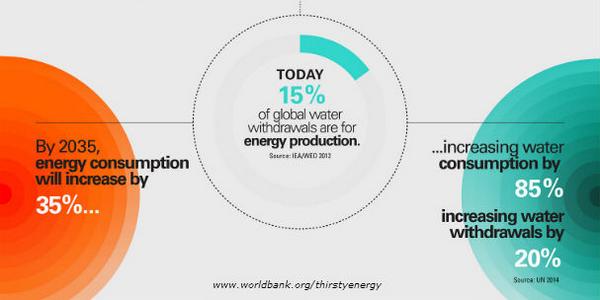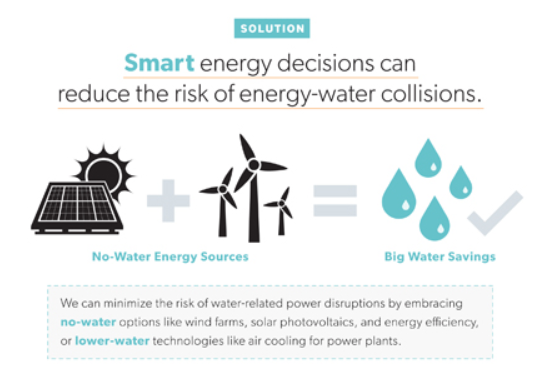This week is World Water Week, and the World Bank is warning that the world’s present ways of producing energy and providing clean water are currently on a collision course.
The Bank says that 15% of water withdrawn from the environment presently goes to energy production, and that that amount will rise to 20% unless there is a rapid shift to sustainable forms of energy. This comes at a time when clean water is becoming an increasingly scarce commodity.
It also warns that climate change will put further pressure on water and energy management by causing more outages to the water supply and intensifying severe weather events, such as floods and droughts.

The World Bank makes the case for combining energy and water management when governments or industry plan new power stations and biofuel plantations.
On its website, the Union of Concerned Scientists points out that nuclear and fossil fuel power plants need a very large and steady supply of water to operate and that in hot dry summers, water is becoming increasingly hard to secure.
In addition, the water needed to cool conventional power plants is warmed up in the process, adding additional pressure to already fragile ecosystems.
The Union makes the case for quickly ramping up clean energy such as solar and wind installations, which require little or no water to run.

Governments acknowledge that ramping up clean energy is essential to keep the world below the agreed maximum two degrees Celsius temperature rise, and have been looking at ways to scale up and accelerate the use of renewables and energy efficiency at special Technical Expert Meetings under the UNFCCC this year.
The issue of clean energy will also be a key focus of the UN Climate Summit in New York on 23 September.
Photo by: Ali Moradmand, Flickr
